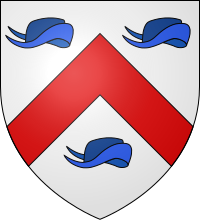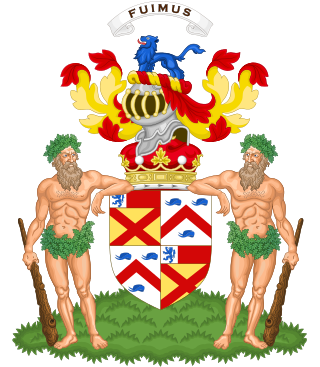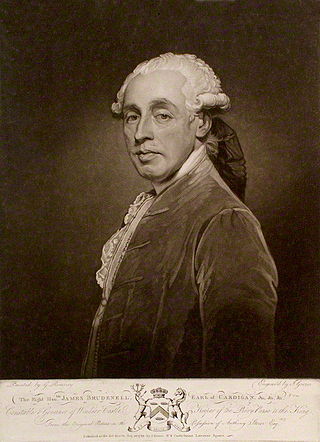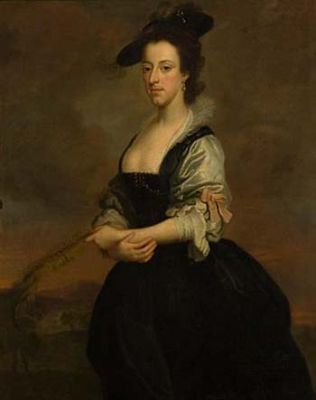| | | | | | | | Edward Bruce of Blairhall
c. 1505–1565 |
|
| | | | | | | | | | | | | | | | | |
| | | | | | | | | | | | | |
Lord Kinloss, 1602 Lord Bruce of Kinloss, 1604
Lord Bruce of Kinloss, 1608 | | | | | | | | | | | | | |
|
Edward Bruce
1548–1611
1st Lord Kinloss, Lord Bruce of Kinloss (1604), and Lord Bruce of Kinloss (1608) | | | | | | | | | | George Bruce of Carnock
c. 1550–1625 | | Margaret Primrose |
| |
| | | | | | | | | | | | | | | | | | | |
| | | | |
| | | | | Earl of Elgin, Lord Bruce of Kinloss, and Baron Bruce of Whorlton in the County of York, 1633 | | | | | | | | | | | | | | | |
| | | | | |
Edward Bruce
1594–1613
2nd Lord Kinloss, Lord Bruce of Kinloss (1604), and Lord Bruce of Kinloss (1608) | | Thomas Bruce
1599–1663
1st Earl of Elgin, Lord Bruce of Kinloss (1633), and Baron Bruce of Whorlton,
3rd Lord Kinloss, Lord Bruce of Kinloss (1604), and Lord Bruce of Kinloss (1608) | | Mary Preston | | George Bruce (2nd) of Carnock
d. 1643 | | Robert Bruce of Broomhall
d. 1652 |
| |
| | | | | | | | | | | | | | | | | | | | | | | | |
| | | | | | | | | | | |
| Earl of Ailesbury (1st creation), Viscount Bruce, and Baron Bruce of Skelton, 1664 | | Baron Brudenell of Stonton in the County of Leicester, 1628 Earl of Cardigan, 1661 | | Earl of Kincardine and Lord Bruce of Torry, 1647 | | | | | | | | | | | | See also: Dukes of Montrose family tree for the Earl of Kincardine 1644 creation |
|
Robert Bruce
1627–1685
2nd Earl of Elgin, Lord Bruce of Kinloss (1633), and Baron Bruce of Whorlton,
1st Earl of Ailesbury, Viscount Bruce, and Baron Bruce of Skelton,
4th Lord Kinloss, Lord Bruce of Kinloss (1604), and Lord Bruce of Kinloss (1608) | | Thomas Brudenell
c. 1583–1663
1st Earl of Cardigan and Baron Brudenell of Stonton | | Edward Bruce
d. 1662
1st Earl of Kincardine and Lord Bruce of Torry | | Alexander Bruce
c. 1629–1680
2nd Earl of Kincardine and Lord Bruce of Torry | | Alexander Bruce
d. 1706
4th Earl of Kincardine and Lord Bruce of Torry |
|
| | | | | | | | | | | | | | | | | | | | | | | |
| | | | | |
| | | | | | | | | | | | | | | | | | | | | | | | | | | | |
| | | | | | | | | | |
Thomas Bruce
1656–1741
3rd Earl of Elgin, Lord Bruce of Kinloss (1633), and Baron Bruce of Whorlton,
2nd Earl of Ailesbury, Viscount Bruce, and Baron Bruce of Skelton,
5th Lord Kinloss, Lord Bruce of Kinloss (1604), and Lord Bruce of Kinloss (1608) | | Robert Brudenell
1607–1703
2nd Earl of Cardigan and Baron Brudenell of Stonton | | Alexander Bruce
c. 1666–1705
3rd Earl of Kincardine and Lord Bruce of Torry | | Robert Bruce
d. 1718
5th Earl of Kincardine and Lord Bruce of Torry | | Alexander Bruce
1662–1721
6th Earl of Kincardine and Lord Bruce of Torry | | Thomas Bruce
1663–1739/1740
7th Earl of Kincardine and Lord Bruce of Torry |
|
| | | | | | | | | | | | | | | | | | | | | | | | | | |
| | | | | | | | | |
| Baron Bruce of Tottenham in the County of Wilts, 1746 | | | | | | | | | | | | | | | | | | | | | | | |
|
Charles Bruce
1682–1747
4th Earl of Elgin, Lord Bruce of Kinloss (1633), and Baron Bruce of Whorlton,
3rd Earl of Ailesbury, Viscount Bruce, and Baron Bruce of Skelton,
6th Lord Kinloss, Lord Bruce of Kinloss (1604), and Lord Bruce of Kinloss (1608),
1st Baron Bruce of Tottenham | | George Brudenell
1685–1732
3rd Earl of Cardigan and Baron Brudenell of Stonton | | Elizabeth Brudenell
1689–1745 | | | | | | | | | | William Bruce
1710–1740
8th Earl of Kincardine and Lord Bruce of Torry |
| |
| Earldom of Ailesbury, Viscountcy of Bruce, Whorlton Barony Bruce, Barony of Bruce of Skelton, and Lordship of Kinloss extinct, 1747 | | | | | | | | | | | | | | | | | | | | | | |
|
| | | | | | | | | | | | | | | | | | | | | | | | | | |
| | | | | | | | | | | | | | | |
| | | | | | | | | | | | | | | Earl of Ailesbury Buckinghamshire, Great Britain (2nd creation), 1747 | | | | | | | | | |
|
George Brudenell, later Montagu 1712–1790
Duke of Montagu, Marquess of Monthermer, 4th Earl of Cardigan and Baron Brudenell of Stonton | | James Brudenell
1725–1811
5th Earl of Cardigan and Baron Brudenell of Stonton | | Robert Brudenell
1726–1768 | | Thomas Brudenell-Bruce
1729–1815
1st Earl of Ailesbury,
2nd Baron Bruce of Tottenham | | | | | | Charles Bruce
1732–1771
5th Earl of Elgin, Lord Bruce of Kinloss (1633) and Lord Bruce of Kinloss,
9th Earl of Kincardine and Lord Bruce of Torry, Lord Bruce of Kinloss (1604), Lord Bruce of Kinloss (1608) |
|
| | | | | | | | | | | | | | | | | | | | | | | | | |
|
| | | | | | | | | | | | | Marquess of Ailesbury, Earl Bruce of Whorlton, County of York, and Viscount Savernake of Savernake Forest, Wiltshire, 1821 | | | | | | | | | | |
| | | | | |
| | | | | | | | Robert Brudenell
1760–1837
6th Earl of Cardigan and Baron Brudenell of Stonton | | Charles Brudenell-Bruce
1773–1856
1st Marquess of Ailesbury, Earl Bruce, and Viscount Savernake,
2nd Earl of Ailesbury,
3rd Baron Bruce of Tottenham | | William Robert Bruce
1764–1771
6th Earl of Elgin and Lord Bruce of Kinloss (1633),
10th Earl of Kincardine and Lord Bruce of Torry | | Thomas Bruce
1766–1841
7th Earl of Elgin and Lord Bruce of Kinloss (1633),
11th Earl of Kincardine and Lord Bruce of Torry |
|
| | | | | | | | | | | | | | | | | | | | | | | | | | |
| | | | |
| | | | | | | | | | | | | | | | | | | | | | | Baron Elgin of Elgin, 1849 |
|
| | | | | | | | James Brudenell 🐴
1797–1868
7th Earl of Cardigan and Baron Brudenell of Stonton | | George Brudenell-Bruce
1804–1878
2nd Marquess of Ailesbury, Earl Bruce, Viscount Savernake,
8th Earl of Cardigan and Baron Brudenell of Stonton,
3rd Earl of Ailesbury,
4th Baron Bruce of Tottenham | | Ernest Brudenell-Bruce
1811–1886
3rd Marquess of Ailesbury, Earl Bruce, Viscount Savernake,
9th Earl of Cardigan and Baron Brudenell of Stonton,
4th Earl of Ailesbury,
5th Baron Bruce of Tottenham | | James Bruce
1811–1863
8th Earl of Elgin and Lord Bruce of Kinloss (1633),
12th Earl of Kincardine (1647) and Lord Bruce of Torry,
1st Baron Elgin |
|
| | | | | | | | | | | | | | | | | | | | | | | | | |
| | | | | |
| | | | | | | | | | | | George John Brudenell-Bruce
1839–1868 | | Henry Brudenell-Bruce
1842–1911
5th Marquess of Ailesbury, Earl Bruce of Whorlton, and Viscount Savernake,
11th Earl of Cardigan and Baron Brudenell of Stonton,
6th Earl of Ailesbury,
7th Baron Bruce of Tottenham | | Victor Alexander Bruce
1849–1917
9th Earl of Elgin and Lord Bruce of Kinloss (1633),
13th Earl of Kincardine (1647) and Lord Bruce of Torry,
2nd Baron Elgin |
|
| | | | | | | | | | | | | | | | | | | | | | | | | |
|
| | | | | | | | | | | | George William Thomas Brudenell-Bruce
1863–1894
4th Marquess of Ailesbury, Earl Bruce of Whorlton, and Viscount Savernake,
10th Earl of Cardigan and Baron Brudenell of Stonton,
5th Earl of Ailesbury,
6th Baron Bruce of Tottenham | | George William James Chandos Brudenell-Bruce
1873–1961
6th Marquess of Ailesbury, Earl Bruce of Whorlton, and Viscount Savernake,
12th Earl of Cardigan and Baron Brudenell of Stonton,
7th Earl of Ailesbury,
8th Baron Bruce of Tottenham | | Edward James Bruce
1881–1968
10th Earl of Elgin and Lord Bruce of Kinloss (1633),
14th Earl of Kincardine (1647) and Lord Bruce of Torry,
3rd Baron Elgin |
|
| | | | | | | | | | | | | | | | | | | | | | | | |
|
| | | | | | | | | | | | | | | | Chandos Sydney Cedric Brudenell-Bruce
1904–1974
7th Marquess of Ailesbury, Earl Bruce of Whorlton, and Viscount Savernake,
13th Earl of Cardigan and Baron Brudenell of Stonton,
8th Earl of Ailesbury,
9th Baron Bruce of Tottenham | | | | | |
|
| | | | | | | | | | | | | | | | | | | | | | | | |
|
| | | | | | | | | | | | | | | | Michael Sydney Cedric Brudenell-Bruce
1926–2024
8th Marquess of Ailesbury, Earl Bruce of Whorlton, and Viscount Savernake,
14th Earl of Cardigan and Baron Brudenell of Stonton,
9th Earl of Ailesbury,
10th Baron Bruce of Tottenham | | Andrew Douglas Alexander Thomas Bruce
b. 1924
11th Earl of Elgin and Lord Bruce of Kinloss (1633),
15th Earl of Kincardine (1647) and Lord Bruce of Torry,
4th Baron Elgin |
|
| | | | | | | | | | | | | | | | | | | | | | | | |
|
| | | | | | | | | | | | | | | | David Michael James Brudenell-Bruce
b. 1952
9th Marquess of Ailesbury, Earl Bruce of Whorlton, and Viscount Savernake,
15th Earl of Cardigan and Baron Brudenell of Stonton,
10th Earl of Ailesbury,
11th Baron Bruce of Tottenham | | Charles Edward Bruce
b. 1961
styled Lord Bruce |
|
| | | | | | | | | | | | | | | | | | | | | Heir apparent to the Earldom of Elgin and the Earldom of Kincardine | |
|
| | | | | | | | | | | | | | | | Thomas James Brudenell-Bruce
b. 1982
styled Earl of Cardigan | | |
|
| | | | | | | | | | | | | | | | Heir apparent to the Marquessate of Ailesbury and Earldom of Cardigan | | |
|




















